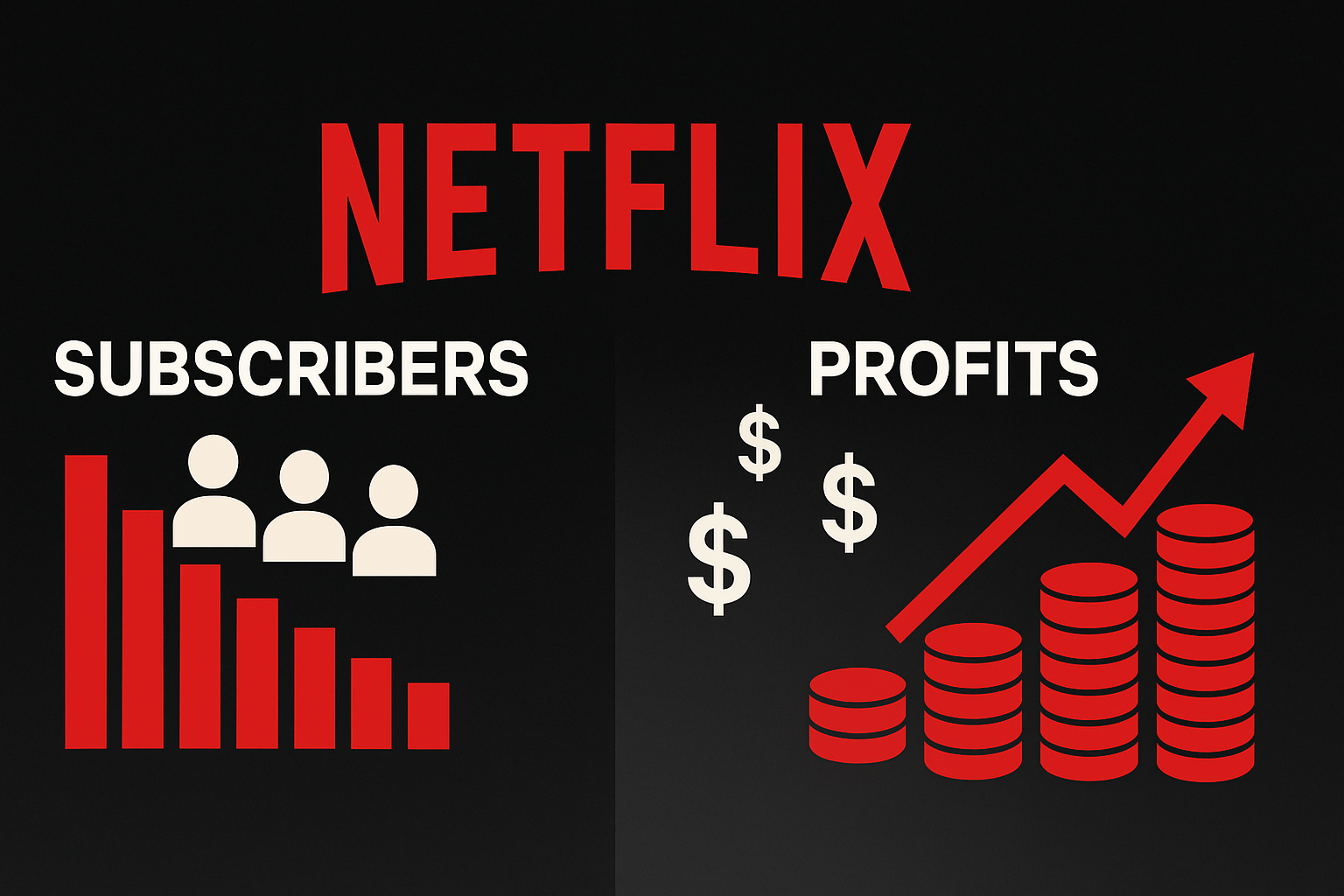Netflix just dropped its Q2 numbers, and Wall Street's loving what they see – a solid earnings beat with 16% revenue growth that sent the stock climbing in after-hours trading. The streaming behemoth now expects annual revenue between $44.8 billion and $45.2 billion, a hefty bump from earlier projections of $43.5 billion to $44.5 billion.
But here's what caught my attention: for the second straight quarter, Netflix has gone silent on specific subscription numbers. Remember those days when subscriber growth was the only thing analysts cared about? When a miss of even a few hundred thousand subscribers could send the stock plummeting?
Those days are dead. Buried. Gone.
In their place: actual profitability. What a concept, right?
I've been covering the streaming wars since Netflix first decided to split its DVD and streaming businesses (remember that disaster?), and this pivot represents something I've seen time and again with maturing tech companies. They always—and I mean always—highlight whatever metric makes them look strongest at their current stage.
It's like watching a predictable dance. Young companies brag about user growth. Mid-stage companies tout engagement metrics when growth slows. Mature companies suddenly discover the magic of EBITDA, free cash flow, and good old-fashioned earnings per share.
Netflix cited a "weakening U.S. dollar" and "healthy member growth" for their improved outlook. Translation: currency fluctuations are making international numbers look prettier, and yes, they're still adding subscribers... they just don't want that to be your focus anymore.
The numbers tell the story: $7.19 EPS versus $7.08 expected. Revenue of $11.08 billion versus $11.07 billion projected. Not the mind-blowing growth figures we saw during the pandemic lockdowns, but something perhaps more valuable to institutional investors – predictable, sustainable profits.
Meanwhile, the competition? Still trying to figure out the basics.
Disney+ continues burning through cash like a California wildfire. Paramount+ seems perpetually stuck in an identity crisis. And don't even get me started on Warner Bros. Discovery's Max service, which feels like it was named and designed by a committee that never actually met in person.
(Having attended several industry conferences where streaming executives speak candidly after a drink or two, I can tell you the envy of Netflix's position is palpable.)
Look, the streaming landscape has transformed into something nobody predicted five years ago. Remember when Netflix proudly declared advertising was antithetical to their user experience? Now they're highlighting ad tier growth as a key business driver. The subscription purist has become a pragmatic hybrid business operator.
The decision to stop reporting quarterly subscription figures represents more than just a data point going dark. It's Netflix declaring: "Judge us as a real business now, not just a growth story." They've graduated from the high-flying tech sector to join the ranks of mature media companies – while somehow maintaining enough of that tech premium to keep their valuation interesting.
What's next? I'd expect continued international expansion (hence their newfound interest in currency fluctuations), further development of their advertising business, and probably more crackdowns on password sharing. Nothing says "established business" quite like optimizing every last revenue dollar from your existing customer base.
In the streaming wars' latest plot twist, Netflix has stopped competing for subscribers at all costs and started competing for something far more revolutionary in the digital entertainment space: consistent profits.
And in today's market? That's a show worth watching.
